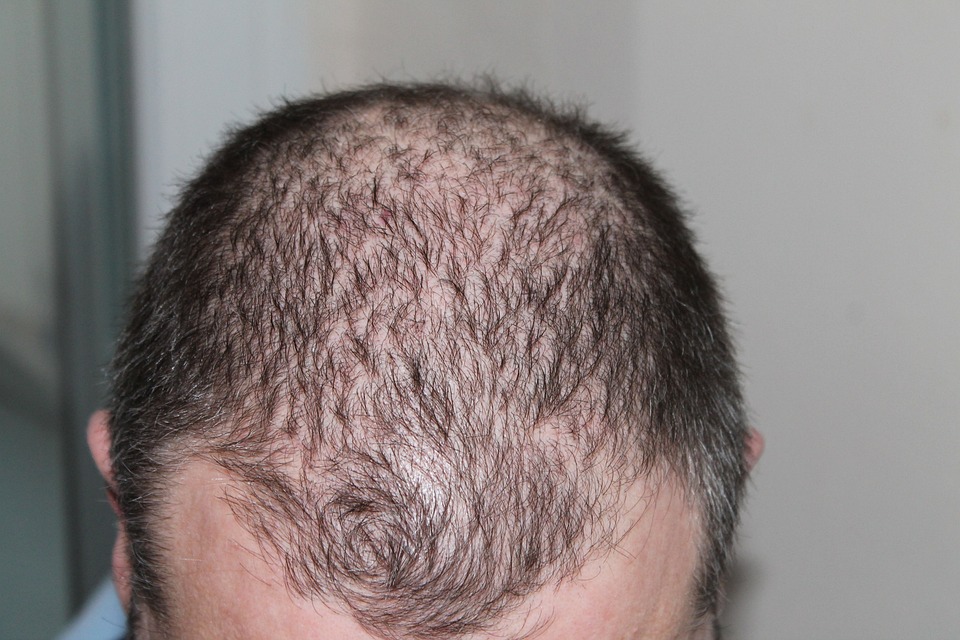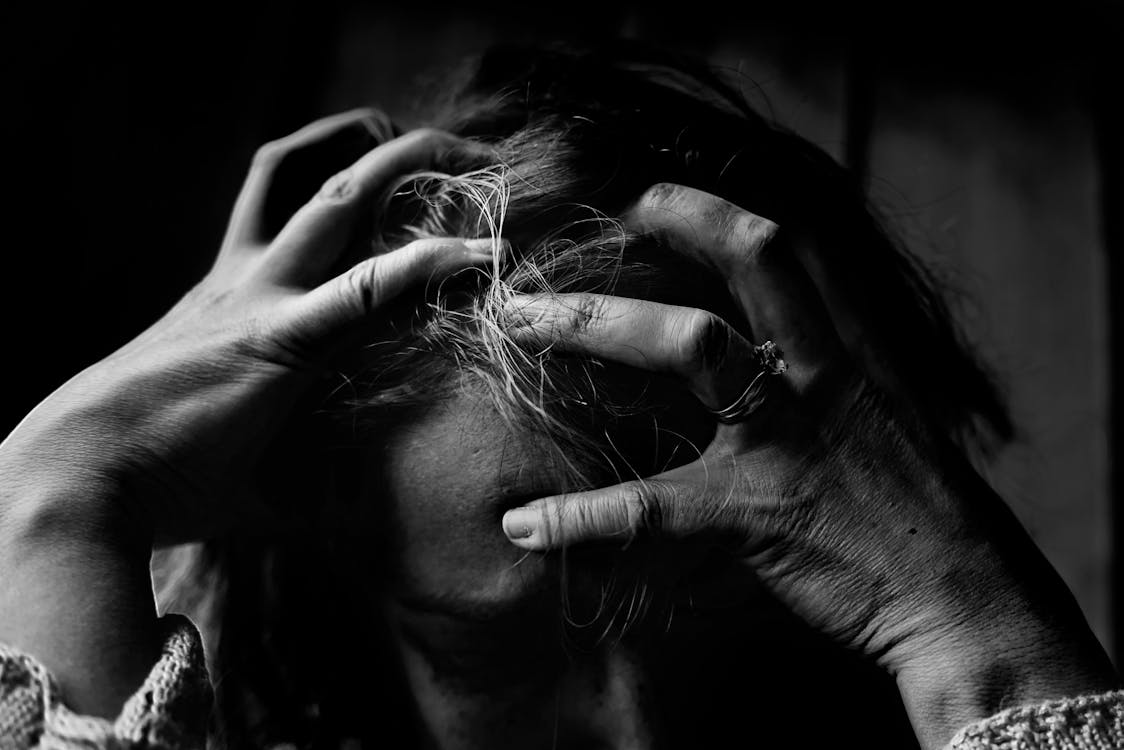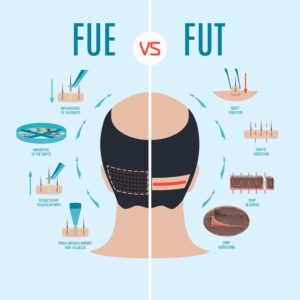In the UK, hair loss is one of the most common conditions people suffer with today! Whilst it’s natural for us to lose between 50 and 100 hairs a day, it’s estimated that excess hair loss and hair thinning affects 70% of all men by 70 [1], and 50% of women by 50 [2]. On this page, you’ll find a range of facts and statistics analysing hair loss, hair loss treatments, and hair transplants.
The Key Facts that Immediately Jump Out
- Across the world, it is reported that 56 million people are currently suffering with symptoms of alopecia and hair loss at this moment in time. [3] Although this number is likely a conservative estimate.
- In the UK approximately 8 million women and 6.5 million men are affected by hair loss, according to the NHS.
- Across the world, more than 650,000 hair transplants are carried out each year! [3]
- 57% of all patients only need one hair transplant surgery. [4]
- Graft (transplanted hair) survival rates are between 90-95% with hair transplant [5]
Hair Loss Statistics
Across the UK, it is estimated that over 15.4 million people are suffering with hair loss at any one point. From temporary to permanent hair loss, there are many ways in which people can lose their hair.
By and large, the most prevalent way in which people suffer with hair loss is through a condition called pattern baldness (androgenetic alopecia). Pattern baldness is a hereditary condition that affects both men and women.
However, male pattern baldness and female pattern baldness cause hair loss in different areas of the head. Click on the links for more information on male pattern baldness and female pattern baldness.
Hair loss can also occur as a result of environmental factors such as: stressful lifestyles, vitamin deficiencies and harsh styling practices. Although, these cases are rarer than pattern baldness and usually only cause temporary hair loss.
What are the Numbers on Pattern Hair Loss (Androgenetic Alopecia)?
Male Pattern Hair Loss

According to the American Hair Loss Society, male pattern baldness is responsible for about 95% of all hair loss in men [6]. Whilst it is not uncommon for male pattern baldness to manifest itself in men as early as 17 years old, statistical evidence tends to look at men in middle age and beyond.
In the same study, researchers estimated that by age 35, 2/3 of men will experience some form of thinning hair or hair loss [6]. Unsurprisingly, this percentages increases as men age. 80% of men are reported to experience hair thinning and a receding hairline by age 70 [6].
One of the reason why male pattern baldness is so prevalent is that men typically have higher levels of testosterone than women. Hair loss is caused by a chemical called dihydrotestosterone (DHT), which is produced by testosterone. For more information on hair loss in men, have a look at our blog post on telogen effluvium and the hair growth cycle.
Female Pattern Hair Loss
In the UK, female pattern baldness is less common than male pattern baldness. According to the NHS, female pattern hair loss will only affect 30% of women by the age of 70 [7]. Whilst many women will still suffer from hair loss, this case of permanent hair loss does appear to be less common.
Female pattern hair loss is most common in postmenopausal women and occurs as a result of hormone imbalance. With a smaller amount of female sex-hormones (oestrogen, progesterone etc) compared to male hormones (testosterone), this increases the concentration of DHT and can cause hair loss.
Signs of female pattern baldness also manifest themselves in different ways when compared to men. Whilst male pattern baldness affects the temples and crown (causing a receding hairline and hair thinning), female pattern hair loss tends to affect women differently.
Typically, women start losing hair on the top of their head (around the mid-parting area) and this area balds over time. If you want to know how hair transplant surgeons diagnose female pattern hair loss, have a look at our page on the Ludwig Scale.
What Age does pattern baldness begin to affect people?
Whilst the underlying reason for pattern hair loss does not differ in men and women, it typically effects both sexes at different points in their lives.
Androgenetic alopecia occurs as a result of our heredity genes and hormonal imbalances. However, the fluctuation in sex-hormones typically occurs at different points in men and women.
In men, testosterone typically peaks around the age of 17-25, causing a peak in DHT production. This is why the hairline can begin to “mature” or even start receding as early as 20-25. One study has suggested that 16% of men are affected by extensive hairless between the ages of 16-29 [8].
In comparison, women tend to start losing hair after the menopause. Whilst a woman remains fertile, she will naturally be higher in female sex-hormones; natural chemicals in the body that also prevent hair loss. However, once these hormones begin to diminish, it is not uncommon for women to experience hair loss.
Alopecia Areata: Prevalence, Causes, and Treatment
In the UK, the National Institute for Health and Care Excellence estimate that alopecia areata affects around 15 in 10,000 people in the general population. That gives a rough figure of 100,000 currently affected by alopecia areata.
Alopecia Areata
Alopecia Areata is a temporary form of hair loss that occurs when the body’s immune system mistakingly attacks areas of its own body. There is no clear research explaining why this happens, as it’s currently a keenly debated amongst doctors and medical researchers.
You can view the full rundown on alopecia by having a look at our dedicated web page.
According to one research paper, a person in the UK stands to have around a 2% chance of having alopecia areata over the course of their lifetime [9]. If you have a family history of alopecia areata, then this statistical likelihood increases to around 8.6% [9].
Alopecia Areata is also more common in patients with other underlying autoimmune conditions, such as: lupus erythematosus, vitiligo, and autoimmune thyroid disease. In a study of people with these conditions, alopecia areata was present in 16% of patients [10]. This, however, is unsurprising given that alopecia areata is also an autoimmune disease.
Alopecia Universalis/Totalis
Alopecia Universals is a condition categorised by the total loss of body and scalp hair. This form hair loss is more extreme than typical alopecia areata.
According to the National Alopecia Areata Foundation, around 1 in 4,000 across the world has Alopecia Universalis. So, it’s less prevalent than Alopecia Areata, but more severe.
Unlike androgenetic alopecia, there is a chance that hair can regrow for someone with alopecia universalis. A drug called adalimumab has shown promising results in treating Alopecia Universalis in a clinical trial [11].
Your Lifestyle Affects Your Chances of Hair Loss!
Whilst the hereditary condition androgenetic alopecia is the most common form of hair loss, that is not to say your lifestyle choices don’t affect hair loss. There are a number of different environmental factors that have been shown to affect hair loss.
With a well-rounded knowledge in factors that can cause hair loss, this is a good way to know if you’re balding is permanent or temporary.
Stressful Lifestyles Greatly Increase your Chance of Hair Loss

In a study conducted by the National Institute of Health, results showed periods of prolonged and extreme stress to inhibit (hair growth-related) stem cell production in mice [11]. Whilst this study was only conducted on animals, it’s certainly backed up by anecdotal evidence of stress-related hair loss in humans.
For those who lead stressful and busy lives, it is not uncommon for many to suffer with hair loss. A stressful lifestyle can cause a degeneration in the catagen (growth) phase of your hair follicles, and an increase in the telogen (resting) phase [12].
This is increasingly worrying when considering the results published by the Mental Health Foundation. 74% of adults in the UK described themselves as ‘overwhelmed or unable to cope’ with the stresses of modern life [13].
With so many Brits struggling at this point in time, it’s depressing to see think about how many people may be suffering with signs of hair loss on top of the cost of living crisis!
Antidepressant Use Can Cause Hair Loss
Whilst SSRI’s remain a safe and effective way of treating symptoms of depression, anxiety and PTSD, new research has found these anti-depressants to cause hair loss as a common side effect. In one case-study, a 21 year old woman showed signs of hair loss whilst taking an SSRI called Sertraline [14].
Other SSRI’s have also been reported to cause hair loss, with the Iranian Journal of Psychiatry and Clinical Psychology suggesting uses may suffer hair loss taking Prozac (fluoxitine) or Effexor XR (venlafaxine) [15]. The Journal of Clinical Psychology has reported similar findings in patients taking Celexa (Citilopram) [16].
Thankfully, research suggests SSRI-induced hair loss to only be a temporary side effect, meaning a change in medication could solve this issue [14]. However, always consult your doctor or physician before making any major changes.
Vitamin Deficiencies Lead to hair loss
Another common reason for hair loss is through vitamin deficiencies. There are a number of different vitamins responsible for keeping your hair happy and healthy, namely:
- vitamin A,
- vitamin D and
- vitamin E
One study suggests that too much vitamin a can induce hair loss in some patients [17]. However, don’t stop eating foods such as carrots, spinach, and diary as these are vital for your eye health. These findings have also been supported by further research, suggesting that hair loss is not only caused by over-supplementation of vitamin a, but vitamin e and selenium as well.
In comparison, under-supplementation of vitamin d (through supplement or exposure to sunglight) can also cause hair loss. Without enough vitamin d, your body fails to produce enough keratin which is responsible for your hair and nails.
if you think you may be suffering with vitamin related hair loss, arrange a consultation with your doctor. This should help to get to the bottom of things.
Smoking can double your chances of hair loss
Did you know that smoking can quicken the effects of androgenetic alopecia? In a 2020 study, researchers compared rates of early-onset alopecia in a two respective groups of smokers and non-smokers between the ages of 20 and 35 [18].
Results showed 425 out of 500 smokers experienced some signs of of hair loss while only 200 of 500 nonsmokers reported the same [19]. As such, it’s fair to assume that smoking can have an effect on hair loss, quickening the rate at which conditions like androgenetic alopecia can develop.
So why does this happen? Two studies, conducted in 2003 and 2018 respectively, found oxidative stress from cigarette smoking to cause hair loss [19 &20]. Oxidative stress is where a heightened number of “free radicals” travel around your body, depriving your hair follicles of oxygen and resulting in an increased rate of hair loss.
One of the healthiest choices you can make (for your lungs and hair) is to stop smoking. Not only will your friends and family help you, but your hair will too!
Traction Alopecia
Aside from pattern baldness, one of the most common forms of hair loss amongst men and women with long hair is traction alopecia. traction alopecia is where excess stress is placed upon the hair and scalp, resulting in (often irreversible) hair loss.
You should watch out for Traction alopecia if you often wear tight ponytails, dreadlocks, or heavy extensions in your hair.
Unfortunately, people of afro-carribean and African descent are disproportionately affected by traction alopecia. This is because some cultural practices, such as having the hair in dreadlocks, can cause excess hair loss.
However, we have produced a helpful article for hair loss in African-American women and women of colour. You can find out how to minimise your likelihood of contracting this form of alopecia in the future!
How does Hair Loss Affect People’s Lives?
Hair loss can affect people’s lives in a number of different ways. From your own sense of self-confidence to how others perceive you, hair loss and can affect your life in a number of different ways.
As well as research into the causes and treatments of hair loss, a considerable amount of data also exists on how hair loss and thinning hair makes sufferers feel. The results show signs of visible hair loss to affect our lives in a number of different ways.
Hair Loss and Personal Perception
In a study conducted by Alphonso et. al (2005), researchers analysed how hair loss affected men’s daily lives using a questionnaires [21]. The results were staggering:
Of the 1536 men responding to the telephone survey, 729 (47%) reported hair loss; these men are the subject of this report. Over 70% of these men reported hair to be an important feature of image, and 62% agreed that hair loss could affect self-esteem. The realization that they were losing hair was linked to concern about losing an important part of personal attractiveness (43% of men), fear of becoming bald (42%), concern about getting older (37%), negative effects on social life (22%), and feelings of depression (21%).
So, what does this mean?
First, our hair is a major factor in how we think about ourselves and our body image. When we begin suffer with hair loss, this can drastically change our self-esteem, self-worth, and sense of attractiveness to others.
Before we begin to think about how hair loss is perceived by others around us, it’s important to consider the effects this has on our own mental health. It’s no surprise that the Hair Transplant industry, as of 2019, is worth around $8.1 billion and is expected to grow a further 25.8% by 2026 [22].
Hair Loss and Public Perception
Hair loss is known to affect many people in different ways. Whilst many clinics have come to us saying hair loss has made them feel “self-conscious” or given them “low self-esteem”, it also has several serious implications on how people are treated in public and the workplace.
In research carried out by Timothy Judge, he found people with hair loss to be less likely to get jobs in an interview than people with no signs of hair loss [23]. On his results, he wrote:
“Little is known about why there are income disparities between the good-looking and the not-so-good-looking. Even accounting for intelligence, a person’s feeling of self-worth is enhanced by how attractive they are and this, in turn, results in higher pay.”
So, hair loss isn’t just simply seen by the sufferers. In some cases, hair loss can also affect how well people perform in job interviews. Although it’s unfair and shallow, your hair is a key factor in how other people perceive you. Whether you like it or not, many people seem to judge others on their appearance, thus affecting a person’s future prospects.
Hair Loss Treatment Statistics
There are many different ways to treat your hair loss symptoms. From chemical treatments to hair transplant surgery, all treatments on the market today work in slightly different ways.
Some help to slow the signs of balding and others focus on hair regrowth and the prevention of further hair loss. Below is a comparison of (almost) all hair loss treatments available to the average person.
Chemical Treatments
By “chemical treatments”, we generally refer to hair loss treatments such as topical medications or tablets. Not only have chemical treatments been freely available to buy over the counter for many years, but they can now be delivered to your door or ordered on a monthly prescription.
Generally speaking, chemical treatments (such as Minoxidil and Finasteride) are most effective for people under the age of 40 who are only starting to show signs of hair loss. This treatment may also be recommended for hair transplant patients who have had surgery at an early age and are likely to continue receding in the years after a hair transplant.
Minoxidil
Across a range of different clinical studies, Minoxidil has shown promising results in slowing the rate of hair loss in some patients. In a study conducted by Kumar et. al (2018), Minoxidil was shown to be 60% effective at slowing hair loss (caused by androgenetic alopecia) and promoting new hair growth [24].
In a more recent clinical study, Minoxidil foam appears to be more effective at treating hair loss than the same dosage as oral medication (tablets) [25]. Moreover, topical Minoxidil also appears to cause less scalp irritation when compared to tablets as well [25].
Finasteride
Finasteride boasts similar success rates to Minoxidil, with one study finding Finasteride to be 59.5% at reducing hair loss in patients [26]. However, it is important to state that chemical treatments cannot regrow hair in bald patches of the temple; it can only maintain and slow further hair loss.
Several studies have also analysed the long-term effectivity of Finasteride in slowing signs of hair loss. In a Japanese study conducted over 10 years, results showed finasteride to be effective at slowing androgenetic alopecia in 99% of cases [27].
So, what do these results suggest? Chemical treatments to be a fantastic preventative measure for those showing early signs of hair loss. They are safe to use over a long-term period and primarily help in slowing down symptoms of male pattern baldness.
Hair Transplants
Before we compare the effectivity of hair loss treatments, it’s important to first understand how a hair transplant is different forms other treatments on the market. Unlike chemical treatments, a hair transplant is a fully medical procedure conducted by a medical doctor.
A hair transplant requires you to visit a surgery/clinic (usually for a day) and your own hair follicles are used to treat your thinning and bald patches. There are many different types of hair transplant you can opt for, and you’re not limited to fixing your hairline, or crown.
As well as standard hair transplant surgery, our clinics also offer eyebrow transplants and beard transplants. A hair transplant is also suitable for all races, hair types, and sexes/genders.
How popular Is Hair Restoration Surgery?
Hair restoration surgery is rising in popularity across the world. Did you know that Business Insider has estimated 1 in 13 adult men have had a hair transplant? That makes a hair transplant one of the top 5 procedures men will get to improve their appearance [3]!
Hair transplants also seem to be more popular with men than women. According to the International Society of Hair Restoration, 87% of hair transplant patients around the globe are male, leaving only 13% of women [3].

Since the 2010’s, Follicular Unit Extraction (FUE) has been the most popular form of hair transplant. The FUE method (and DHI, an even newer derivative) has overtaken the previous hair transplant surgical method, called Follicular Unit Transplantation (FUT).
Follicular Unit Extraction (FUE)
Follicular Unit Extraction is now the industry standard for treating androgenetic alopecia. It looks to extract your hair follicles individually (from a donor area) and implant them directly into your balding/thinning area.
Clinical studies of FUE have shown this hair transplant method to have a graft survival rate of between 90 and 95% [5]. A “graft” is a term hair surgeons give to the hair follicles used during transplantation.
This means that the new hair used to lowering your hairline, thickening your crown, and enable hair regrowth is incredibly hardy and resilient to further hair loss.
Follicular Unit Transplant (FUT)
Whilst Follicular Unit Transplantation is now becoming obsolete as a hair loss treatment, it does have some rare and occasional uses. For some patients with the lowest hair density (a stage 5-7 on the Hamilton-Norwood Scale), FUT may still be a viable hair loss treatment.
FUT actually bares a slightly higher graft survival rate than its more popular counterpart, FUE. According to one clinical study, FUT produced hair follicles that were stronger than donor hair follicles picked for FUE, resulting in a slightly higher yield of grafts [28].
However, graft survival rate isn’t everything! The main problem facing FUT patients is the long linear scar it leaves on the back of the head for life. Often labelled the “strip method”, FUT is particularly brutal when compared to FUE; a method that is non-invasive, produced minimal scarring, and boasts a much shorter recovery time.
Platelet Rich Plasma Therapy (PRP)
Platelet Rich Plasma Therapy is a popular new treatment being pioneered by hair surgeons that aims to combat noticeable hair loss by making the hair look fuller and thicker. Whilst this method is not a hair transplant (it does not use extract any hair follicles), a small sample of blood is extracted, spun in a centrifuge, and injected back into the thinning area.
In one clinical study, 3 months of PRP treatments showed a significant increase in patients’ scalp hair density [29]. Researchers concluded that PRP is a safe and effective treatment for pattern baldness and may be more effective when combined with a hair transplant.
What Hair Loss Treatment Is Right For Me?
Well, it’s difficult to say. As has been stated above, pattern baldness (androgenetic alopecia) is a condition that will always cause people to lose hair over the course of their life.
Even if a person decides to implant more hair into a balding area, no treatment is 100% effective. If you’re suffering with pattern baldness, the reality is you’re always going to be fighting hair loss.
In research peer-reviewed by Dr. Debra Jaliman (2021), chemical treatments seem to be most effective at treating sufferers under 40 and only showing early signs of hair loss [29]. So, if you’re looking for a preliminary hair loss treatment, then something like Minoxidil or Finasteride is a good place to start.
However, for hair loss sufferers who seem to be further along down the line (a stage 3 and beyond on the Hamilton-Norwood Scale), a hair transplant seems to be the only long-term solution that provides real-looking, effective results.
When thinking about treating your hair loss, its important to think about your hair follicles. Chemical treatments will not enable dormant (bald) hair follicles to regrow. It will only help to maintain your current stage of hair loss. If you’re looking for new hair growth, then the reality is that a hair transplant is the only true way to end your hair loss concerns.
- [1] https://www.readersdigest.co.uk/health/medical-myths/medcial-myth-bald-men-have-more-testosterone
- [2] http://www.nahrs.org/PatientInformation(FAQs)/FemalePatternHairLoss(FAQ).aspx
- [3] https://markets.businessinsider.com/news/stocks/every-13th-man-has-a-hair-transplant-according-to-bookimed-study-1028724168#:~:text=As%20the%20Hair%20Society%20reports,2014%20in%20agreement%20with%20ISHRS
- [4] https://www.uksmiles.co.uk/hair-transplant-statistics-2021
- [5] https://www.qunomedical.com/en/blog/hair-transplant-success-rates
- [6] https://www.americanhairloss.org/men_hair_loss/introduction.html
- [7] https://publicdocuments.sth.nhs.uk/pil1150.pdf
- [8] https://pubmed.ncbi.nlm.nih.gov/9865198/
- [9] https://www.ncbi.nlm.nih.gov/books/NBK537000/
- [10] https://pubmed.ncbi.nlm.nih.gov/22512484/
- [11] https://jamanetwork.com/journals/jamadermatology/fullarticle/1913664
- [12] https://www.nih.gov/news-events/nih-research-matters/how-stress-causes-hair-loss
- [13] https://www.mentalhealth.org.uk/about-us/news/survey-stressed-nation-UK-overwhelmed-unable-to-cope
- [14] https://www.ncbi.nlm.nih.gov/pmc/articles/PMC3000200/
- [15] https://brieflands.com/articles/ijpbs-4000.html
- [16] https://www.ncbi.nlm.nih.gov/pmc/articles/PMC181211/
- [17]https://www.ncbi.nlm.nih.gov/pmc/articles/PMC6380979/
- [18] https://onlinelibrary.wiley.com/doi/10.1111/jocd.13727
- [19] https://www.karger.com/Article/Abstract/68894
- [20]https://www.ncbi.nlm.nih.gov/pmc/articles/PMC6369642/
- [21] https://pubmed.ncbi.nlm.nih.gov/16307704/
- [22] https://www.gminsights.com/industry-analysis/hair-transplant-market
- [23] https://www.belgraviacentre.com/blog/does-hair-loss-affect-career-prospects-436/
- [24] https://www.ncbi.nlm.nih.gov/pmc/articles/PMC6371730/
- [25] https://www.ncbi.nlm.nih.gov/pmc/articles/PMC6691938/
- [26] https://www.ncbi.nlm.nih.gov/pmc/articles/PMC3969676/
- [27] https://www.researchgate.net/publication/337105943_Long-term_10-year_efficacy_of_finasteride_in_523_Japanese_men_with_androgenetic_alopecia
- [28] https://www.ishrs-htforum.org/content/28/5/179
- [29] https://www.webmd.com/beauty/thinning-hair








